Today, Solidigm has two new SSDs, which you may have seen on STH over the past year. The Solidigm D7-PS1010 and D7-PS1030 are PCIe Gen5 NVMe SSDs, expanding the company’s portfolio to a faster drive segment. We are going to have our full review after FMS 2024, but we thought we would cover the announcement during the show.
Solidigm D7-PS1010 and D7-PS1030 PCIe Gen5 NVMe SSDs Launched
The Solidigm D7-PS1010 is the company’s 1 DWPD (drive write per day) and higher capacity line while the D7-PS1030 is the 3 DWPD higher endurance line. Stay tuned as we have some cool data coming out on SSD endurance likely tomorrow that we did alongside Solidigm.
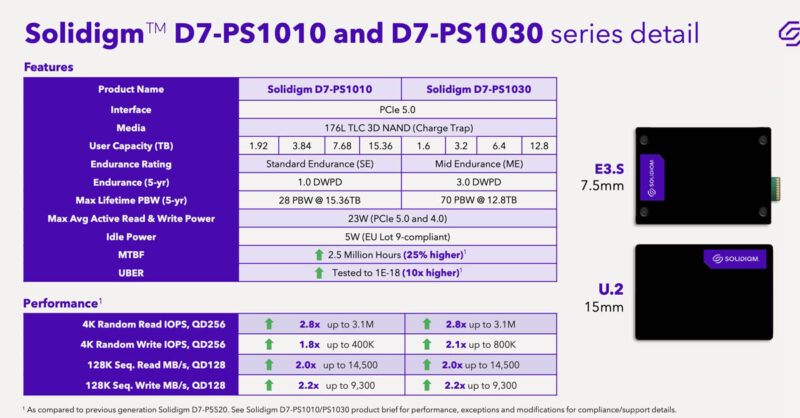
The drives come in both U.2 and E3.S form factors and span from 1.6TB to 15.36TB in capacity.
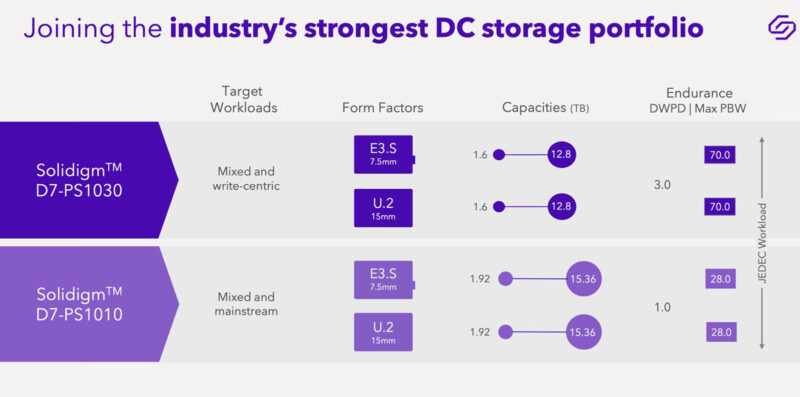
The drives feature modern standards compliance including OCP v2.0.

Of course, we are going to see a number of PCIe Gen5 SSDs get launched this week, but here is how the D7-PS1010 compares to those other drives.

Since we have tested these drives already and are just spacing the review out a bit, we can confirm the performance figures are in-line with what is shown above. You can use these CrystalDiskMark runs to compare to your current drives.

Here is the competitive analysis on a number of real-world workloads instead of just synthetic performance testing workloads:

Something Solidigm is pushing is the idea that one can use flash for a performance tier of storage near GPUs. AI training clusters are huge consumers of storage as well.

This joins drives like the Solidigm D7-P5810 and Solidigm D5-P5336 61.44TB SSD in the company’s portfolio.

For some of our readers, this might feel like the have heard of these drives before. Solidigm is now owned by SK Hynix, and we showed the SK hynix PS1010 and PS1030 PCIe Gen5 NVMe SSDs and V9 NAND at FMS 2023.

We also showed the U.2 version at OCP Summit 2023.

Solidigm is using the SK Hynix NAND and drive platform, and then putting its own firmware on the drive to deliver these models to a wider set of customers. While the hardware is very similar, the firmware is the big difference.
Final Words
Overall, it is great that we are starting to get more PCIe Gen5 NVMe SSDs. We started seeing PCIe Gen5 servers almost two years ago, so this feels like a big step up in performance SSDs.
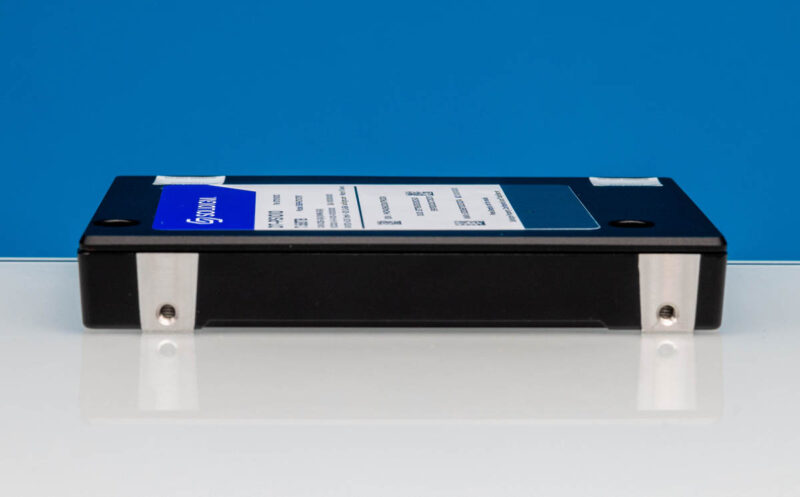
We will have a full review coming soon, but certainly check back this week as we update the Used enterprise SSDs: Dissecting our production SSD population piece from 2016 likely tomorrow.



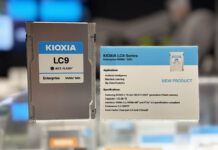
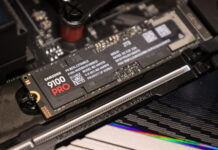
Looks like Optane is still the king for low queue depth 4k random performance, years after its discontinuance.
Are there reviews for these yet? It says in the article “Since we have tested these drives already and are just spacing the review out a bit, we can confirm the performance figures are in-line with what is shown above.” but there isn’t an actual review I can find.